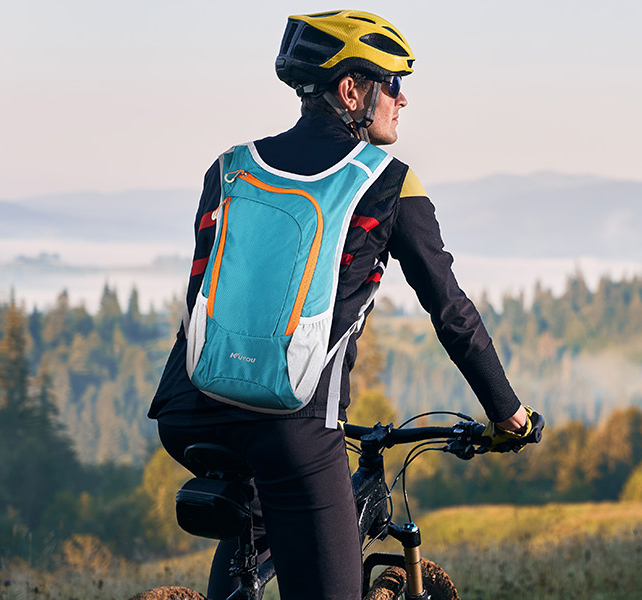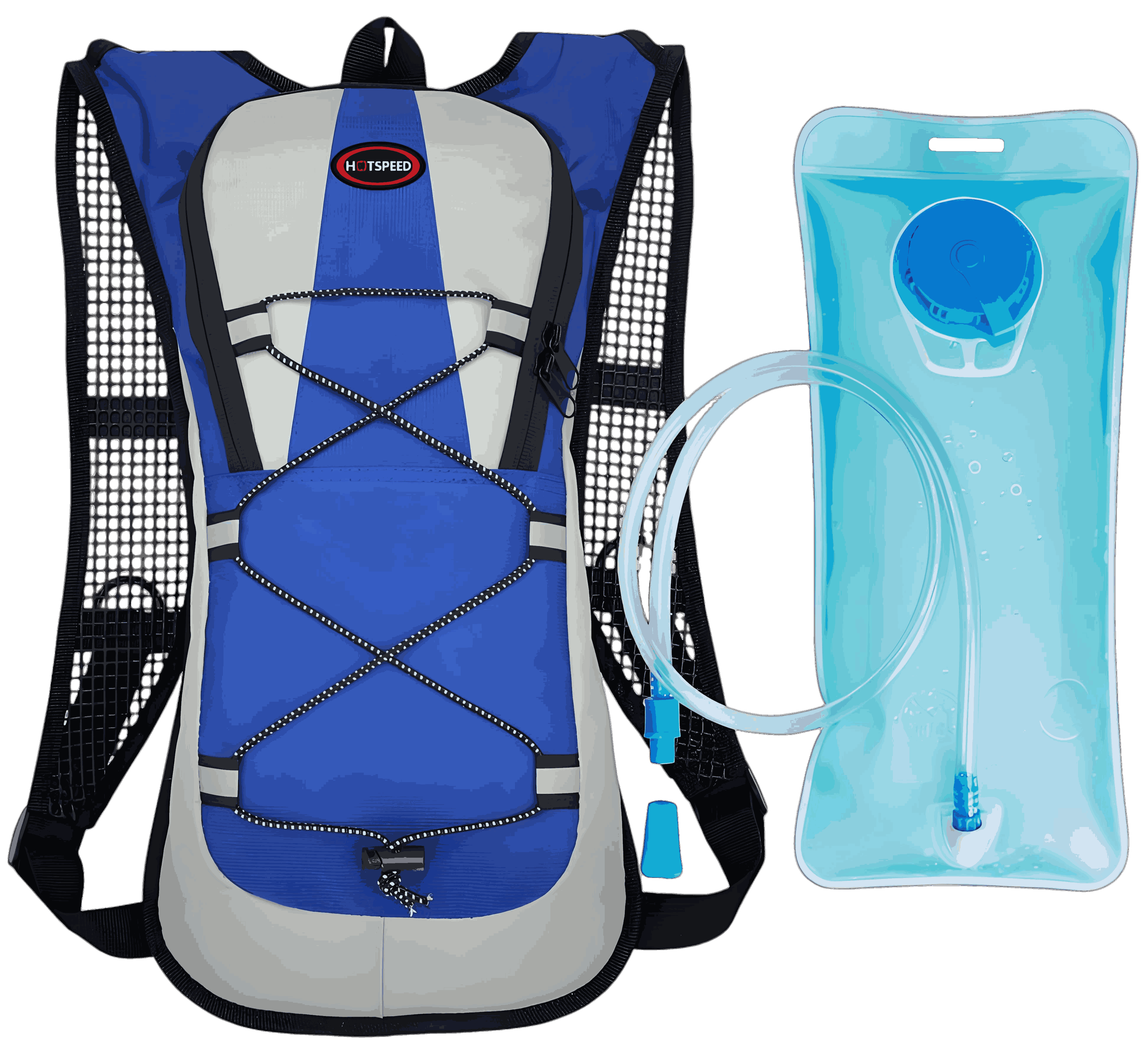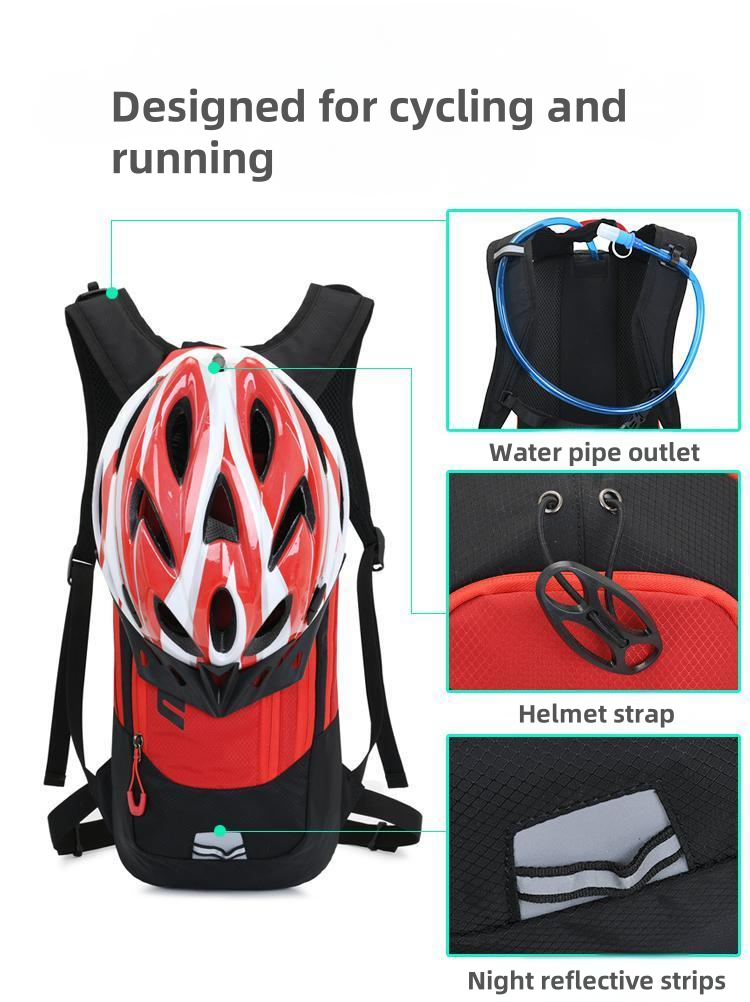As a seasoned trail runner and outdoor enthusiast, I’ve tackled countless mountain paths and tested a wide range of hydration packs. From my early days as a novice to becoming someone who can confidently pick the right gear, I’ve learned a lot through trial and error. One of the most frustrating issues I’ve faced is: Why does my hydration pack keep shaking during runs? That constant “sloshing” or bouncing not only disrupts my rhythm but also causes shoulder and back discomfort. After years of experimentation and research, I’ve pinpointed the causes of this issue. In this article, I’ll share my insights, blending scientific principles and practical tips, to help you eliminate hydration pack shake and enhance your trail running experience.

1. Why Is Hydration Pack Shake So Annoying?
If you’re a trail running enthusiast or enjoy long-distance hiking, you’ve likely encountered these scenarios:
The water in your hydration pack sloshes back and forth, making a distracting “gurgle” sound.
The pack slides around on your shoulders or back, with the shaking worsening the faster you run, sometimes even chafing your skin.
You’ve tried adjusting the shoulder straps or chest straps, but the shaking persists, ruining your running experience.
These issues plagued me when I first started trail running. The shaking wasn’t just annoying—it could throw off my balance and increase the risk of injury. To get to the root of the problem, I analyzed it from four key angles: pack design, hydration bladder structure, ergonomics, and user habits. Let’s dive into each below.
2. Core Reasons for Hydration Pack Shake
2.1. Pack Design Issues: Lack of Fit
The shaking of a hydration pack is often tied to how well it fits your body. Trail running involves frequent vertical and lateral movements, and if the pack doesn’t stay snug, it’s bound to shift. Here are some common design flaws:
Poorly Designed Shoulder and Chest Straps
Many hydration packs have overly wide or inelastic shoulder straps, making them unsuitable for different body types. If the chest strap is positioned too high or too low, it fails to secure the pack effectively.
My Experience: I once used a budget hydration pack with loose, flimsy straps. During runs, it swung like a pendulum. Switching to a pack with adjustable chest straps and elastic shoulder straps drastically reduced the shake.
Lack of Back Panel Support
High-quality hydration packs often feature an ergonomic back panel that conforms to the spine’s natural curve, distributing weight evenly. Cheaper packs lack this, causing the pack to “collapse” during movement, leading to shake.
Data Support: According to Outdoor Gear Lab, packs with rigid back panels and high fit (like those with EVA foam) improve stability by 30% during dynamic activities.
Uneven Load Distribution
If the pack’s weight is concentrated at the bottom or on one side, the center of gravity shifts during runs, amplifying shake. For example, an overfilled bladder or improperly placed gear can throw off balance.
2.2. Hydration Bladder Issues: Liquid Movement
The hydration bladder is the heart of the pack, and freely moving water is a major cause of shake. Here’s why:
Partially Filled Bladder
When the bladder is only half full, the empty space allows water to slosh back and forth, creating a “gurgling” sound and shaking sensation.
My Lesson: During a 30km trail race, I filled a 2-liter bladder with just 1 liter of water, and it felt like I was carrying a water balloon. I now either fill the bladder completely or use a smaller-capacity one, which solved most of the issue.
Lack of Anti-Slosh Design
Premium bladders often include baffles or wave-shaped inner walls to slow water movement and reduce shake. Budget bladders are typically simple, open cavities, allowing water to flow freely.
Industry Insight: Some high-end bladders incorporate foam pads or dividers to minimize liquid movement, enhancing stability.
Loose Bladder Fit
If the bladder isn’t secured in its designated compartment or the fixing straps are loose, it can slide up and down during runs, worsening shake.

2.3. Ergonomic Issues: Mismatch with Body
Everyone’s body shape and running style are unique, and how well the pack fits your body directly affects shake. Key factors include:
Incorrect Pack Size
Hydration packs come in sizes like S/M/L. Choosing the wrong size can result in a pack that’s too long or too short, failing to hug your back. For instance, at 175cm tall, I initially bought an M-sized pack that slapped my hips. Switching to an L-size resolved the issue.
Running Form and Center of Gravity
Trail running involves constant posture changes (uphill, downhill, turning), and a poorly designed pack can lose balance during rapid movements.
My Tip: I found that leaning slightly forward while running helps the pack stay closer to my body, reducing shake.
Body Type Variations
Gender and body shape differences affect pack fit. Female runners may need women-specific packs with shoulder and chest straps designed for chest contours.
2.4. User Habits: Small Details Matter
Sometimes, the shake isn’t due to the pack’s design but improper use. Here are common mistakes I’ve seen:
Improper Adjustments
Many runners throw on the pack, tug the shoulder straps, and start running without adjusting the chest or waist straps (if available). The right approach is to adjust the shoulder straps first, then secure the chest strap to keep the pack snug.
My Experience: I now spend 2 minutes before each run fine-tuning my pack, ensuring the shoulder straps are snug and the chest strap sits just below my sternum. This eliminates most shake.
Overloading the Pack
Hydration packs are designed for lightweight use, typically with 5-15 liters of capacity. Packing too much gear (e.g., food, extra clothing) exceeds the pack’s load limit, causing shake.
Recommendation: Choose a pack capacity based on your activity distance—5-8 liters for under 10km, 10-12 liters for over 20km.
Neglecting Bladder Maintenance
Air bubbles or debris inside the bladder can increase liquid shake. I clean and dry my bladder thoroughly after each use to keep it free of residue.

3. How to Effectively Reduce Hydration Pack Shake?
Now that we’ve identified the causes, here are five practical solutions to tackle shake, covering everything from gear selection to usage:
3.1. Choose the Right Pack
Prioritize Ergonomic Design: Opt for packs with EVA foam back panels, adjustable chest straps, and elastic shoulder straps for better fit and stability.
Confirm Size with Try-On: Try the pack before buying to ensure it matches your body shape and size.
Check Bladder Design: Choose bladders with baffles or anti-slosh features to minimize water movement.
3.2. Optimize Bladder Use
Fill the Bladder Fully: Fill the bladder to capacity to reduce air space. If you need less water, use a smaller bladder (e.g., 1-liter).
Secure the Bladder: Ensure the bladder is placed in its designated compartment and fastened with straps or Velcro.
Clean Regularly: Clean the bladder after use to remove air bubbles or debris that could cause shake.
3.3. Adjust Pack Fit
Proper Wearing Sequence: Put on the pack, adjust shoulder straps to a comfortable length, then tighten the chest strap (positioned below the sternum) and waist strap (if available).
Dynamic Adjustments: If you feel shake during a run, stop and check if the straps have loosened, then retighten.
Balance the Load: Distribute heavy items (e.g., phone, energy gels) evenly on both sides to avoid lopsided weight.
3.4. Improve Running Form
Slight Forward Lean: Maintain a slight forward tilt during trail runs to keep the pack closer to your body, reducing vertical shake.
Shorten Stride: On descents, take shorter steps to minimize vertical bounce and pack shake.
Strengthen Core: Core strength training improves overall stability, indirectly reducing pack movement.
3.5. Use Supplementary Gear
Compression Straps: Some packs have compression straps to tighten the pack’s volume, reducing shake space.
Anti-Slip Pads: Add anti-slip pads to shoulder straps or back panels to increase friction and prevent sliding.
Lightweight Gear: Choose ultralight bladders and packs to reduce overall weight and shake potential.
My Real-World Example: During a 50km trail race last year, I used a 12-liter pack with a 2-liter anti-slosh bladder. Before the race, I meticulously adjusted the shoulder and dual chest straps, filled the bladder fully, and secured it tightly. I only packed essentials (energy gels, headlamp), and the pack stayed rock-solid throughout, saving me energy and keeping me focused.

4. Common Types of Hydration Pack Shake and Solutions
For clarity, here’s a table summarizing shake types, causes, and fixes:
| Shake Type | Possible Causes | Solutions |
|---|---|---|
| Vertical Shake | Loose shoulder straps, unsecured bladder, oversized pack | Tighten shoulder straps, secure bladder, choose correct pack size |
| Side-to-Side Shake | Improper chest strap position, uneven load, off-center pack | Adjust chest strap to sternum level, balance gear, choose high-fit pack |
| Internal Bladder Shake | Partially filled bladder, no anti-slosh design, air bubbles | Fill bladder fully, choose baffled bladder, clean to remove bubbles |
| Pack Sliding (Skin Chafing) | Non-grip shoulder straps, low-friction material, improper fit | Add anti-slip pads, choose packs with grip straps, adjust straps correctly |
5. Tips for Choosing a Hydration Pack
To prevent shake from the outset, keep these factors in mind when buying:
Capacity: Match capacity to activity distance—5-8 liters for short runs (under 10km), 10-15 liters for longer runs (over 20km).
Material and Weight: Opt for lightweight nylon or polyester, with a pack weight of 300-600 grams.
Breathability: Ensure the back panel and shoulder straps have mesh ventilation to prevent excessive sweating.
Try Before Buying: Test multiple packs in-store, mimicking running motions to assess fit and stability.
Budget: Mid-to-high-end packs (around $40-$100) typically offer better design and anti-shake performance.
My Advice: If you’re on a tight budget, start with a mid-range 8-10-liter pack, suitable for most trail scenarios. As your skills improve, invest in a premium model for specialized needs.
6. External Factors Affecting Shake
Beyond the pack itself, external conditions can exacerbate shake:
Complex Terrain: Rocky trails or steep descents increase body vibration, amplifying shake. Slow down on tough terrain and adjust your form.
Weather: High temperatures cause sweating, which can make straps slippery. Choose breathable packs or wear quick-dry clothing to increase friction.
Gear Wear: Over time, strap elasticity and fixing bands degrade, increasing shake. Replace your pack every 1-2 years.
7. Conclusion: Eliminate Shake from Source to Details
To sum up, hydration pack shake stems from design flaws, water movement, poor body fit, and improper use. The solutions are straightforward: choose a well-fitted pack, optimize bladder use, adjust fit correctly, refine running form, and use supplementary gear when needed. By addressing these areas, you can virtually eliminate shake.
Trail running is about pushing your limits, and a stable hydration pack lets you focus on every step. I hope this article helps you identify and fix shake issues, making your runs smoother and longer. If you have lingering questions, feel free to share your experiences in the comments—I’d love to discuss further!

8. Related Q&A
Q1: Does hydration pack shake affect running performance?
A: Yes. Shake distracts you, increases energy expenditure, and can disrupt running form. A stable pack lets you focus on pace and breathing, indirectly boosting performance.
Q2: Can a regular backpack be converted into a hydration pack?
A: Not recommended. Regular backpacks lack ergonomic design and bladder compartments, leading to worse shake. Invest in a dedicated hydration pack for better value.
Q3: How do I know if a pack size is right for me?
A: The back panel should follow your spine’s curve, with the bottom above your hips and the top below your shoulders. Test by running a few steps to check for sliding or bouncing.
Q4: How can I reduce the loud sloshing sound from the bladder?
A: Sloshing is caused by a partially filled bladder or air bubbles. Fill the bladder fully, remove air, or choose a baffled bladder to minimize noise.
Q5: Any special tips for female runners choosing a hydration pack?
A: Opt for women-specific models with shoulder and chest straps designed for chest contours. Ensure the chest strap is comfortable and doesn’t restrict breathing during try-ons.